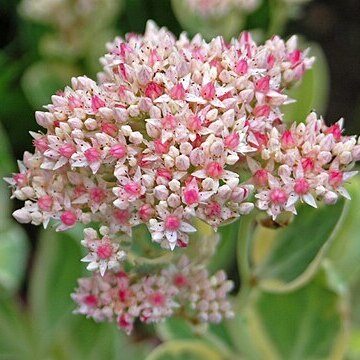Roots tuberous, carrot-shaped. Stem simple, erect, 30-70 cm. Leaves opposite, rarely 3-verticillate, sessile, oblong to ovate-oblong, 4.5-7 × 2-5.5 cm, base attenuate, margin sparsely serrate, apex obtuse to acute. Cymes flat topped, densely flowered. Flowers ca. 1 cm in diam.; pedicel shorter than or equaling flowers. Sepals ovate, ca. 1.5 mm. Petals dense, white or pink, broadly lanceolate, 5-6 mm, apex acuminate. Stamens slightly shorter than or equaling petals; anthers purple. Nectar scales oblong-cuneate, ca. 1 mm, apex emarginate. Carpels nearly free, erect, ellipsoid. Fl. Aug-Oct.
A herb.

